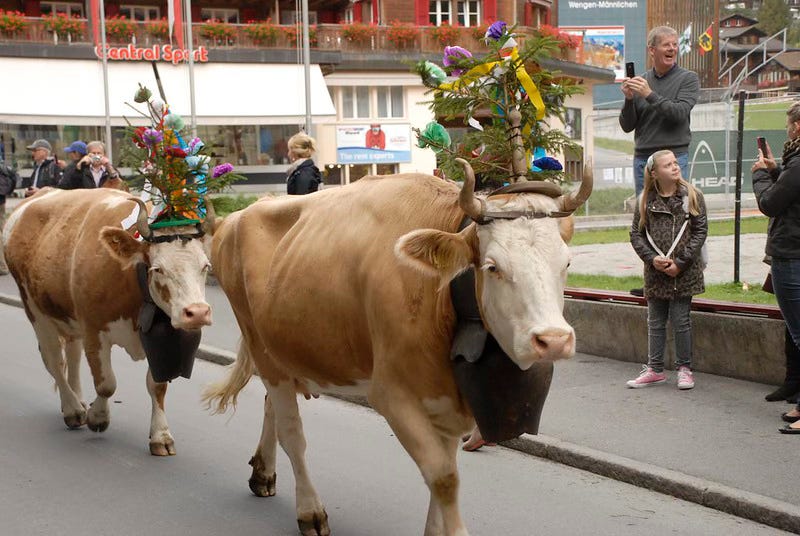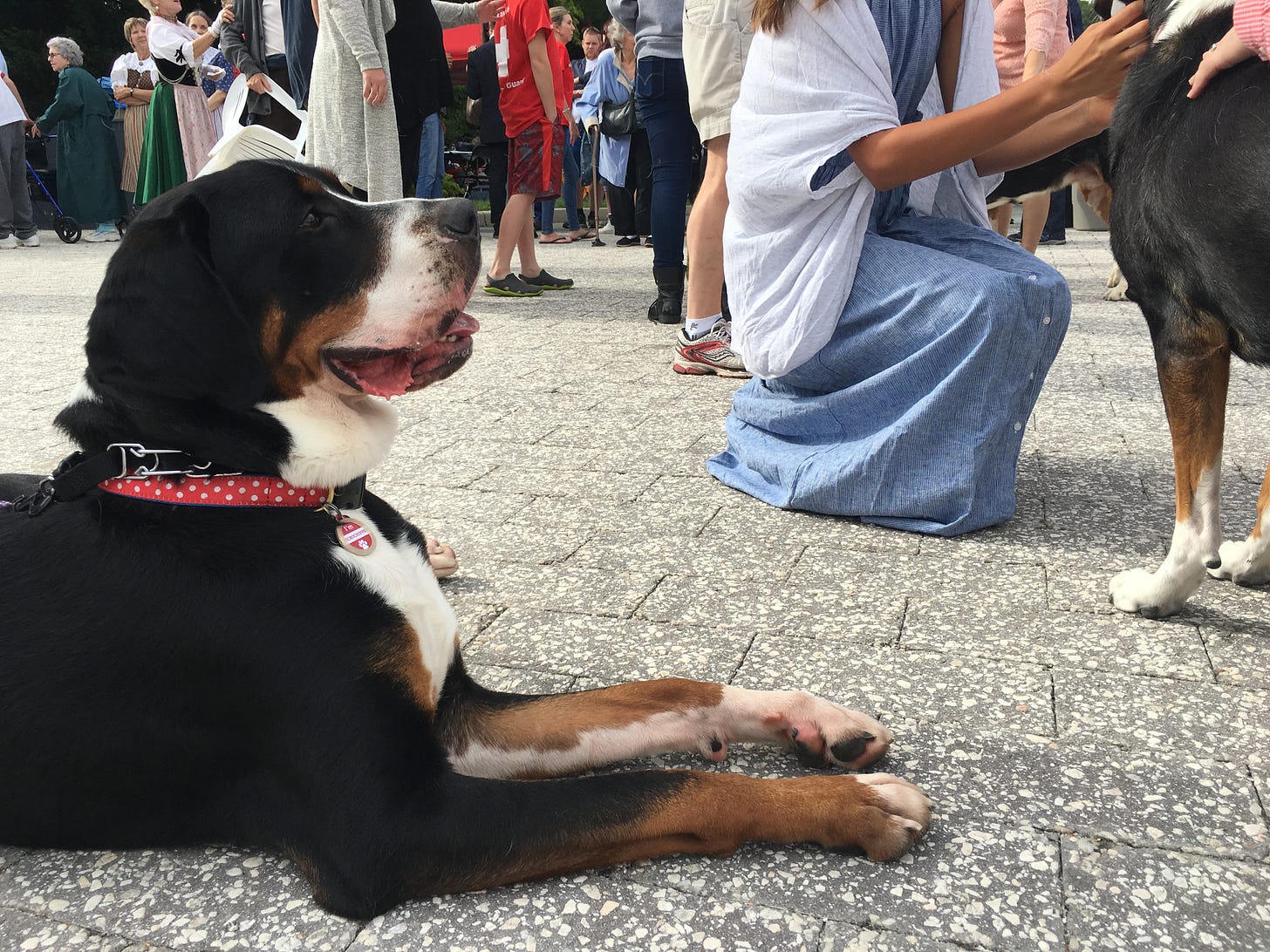Chestnuts, a river emptied of swimmers, autumn fairs, pumpkin spice lattes (yes, even in Switzerland) are signs that fall is upon us. In the mountainous parts of the country, there’s another very Swiss autumn indicator: the cows come home.
In the summer months, farmers take their cows to alpine meadows to graze on the mountain herbs, grasses, and flowers. According to this article from Migros, one of the two big grocery store chains, that mountain greenery gives the cows’ milk a certain aroma that differs by region. That milk gets sold as “alpine milk” or “alpine cheese,” an ingredient that often appears in Swiss recipes. That used to perplex me, because it’s not like Whole Foods sells alpine or mountain cheese. But they do typically have Emmental, Gruyère, or these other cheeses, should you need a substitute in your cooking.
Back to the cows in the mountains, who would freeze and starve if left at that altitude in the winter. At the end of the summer, the farmers herd the cows back to the valleys. That trip takes the form of a cow parade, the Alpabzug, or alpine descent. In French, it’s called the désalpe. The lead cows wear bells and floral headdresses, while the leading humans often wear traditional costume. An Alpabzug article on Switzerland Tourism says that the cow herders choose which cows get crowns, perhaps because the cow produced lots of milk, or maybe because she leads the herd well. I would think another criteria is, “Will this cow tolerate wearing a flower headdress?”
The headdress, which differs region to region, is called a “Tschäppi,” which comes from the French word for hat, “chapeau,” at least according to this online Bern-German dictionary (Swiss Germans all speak Swiss German, but we all really speak a regional Swiss German. Mine is Basel German, Zurich people speak Zurich German, or Züridütsch).
Depending on the cow parade, you might also get a festival with yodeling and alphorns, farmers’ markets, or cow beauty contests. In September 2014, Gabe and I were in Wengen, a town halfway up a mountain near Interlaken, when we had the good fortune to witness an Alpabzug. The cows wore flowers; the humans wore work clothes. There were no additional festivities, so I’m hoping to catch a cow parade in the future, because the only thing better than seeing cows with their bells in the alps is seeing cows with bells and flower crowns.
If you’re thinking about visiting in Switzerland in the fall and want to see a cow parade, here’s a list in German with a map of upcoming cow parades. Newly Swissed has a comprehensive guide for 2024, which is also a good starting point for planning, or forecasting going down an Alpabzug rabbit hole. Cow hole?
Today in Swiss German: Senn
Reading up on the cow parade tradition, I came across the word Senn. I knew that a Sennenhund is a Swiss mountain dog, but what did this word mean without the “dog” suffix?
Briefly, the Senn, with assistants, manages a dairy on the alp in the summer months. The Senn is responsible for the cows and goats and for all the milk processing during the summer grazing. A professional cheesemaker, the Senn is hired by the community, alpine coops, or private individuals to tend to the herd and dairy. At the end of the season, he turns over the cheese he produces to the farmers for the Käseteilet, or Chästeilet, the distribution of cheese to the farmers.
Senning as a job goes back to the Middle Ages, and I could probably write another newsletter about it. Apparently, after 1950, there was a shortage of Sennen, until the 1970s, when young city dwellers, including women, started doing the job. They trained for the job at agricultural schools.
This information on the Senn comes from the Historical Lexicon of Switzerland (German, French, Italian only). The Senn entry ends with this note:
“The glorification of the life of herdsmen and dairymen in the alpine literature of the 18th and 19th centuries and the economic prosperity of the dairymen, especially the herdsmen, fostered professional pride and thus the emergence of customs associated with the work.”
The examples of Senn-related customs include alpine processions, and with that we’ve come full circle.
Thanks to Bethany for becoming a paid subscriber this week, and thanks to Nancy for asking for more info on “the tradition of bringing the cows down from the mountains.”
Sources
"Chästeilet" auf dem Hasliberg
Schweizer Alpabzüge - eine jahrhundertealte Tradition





